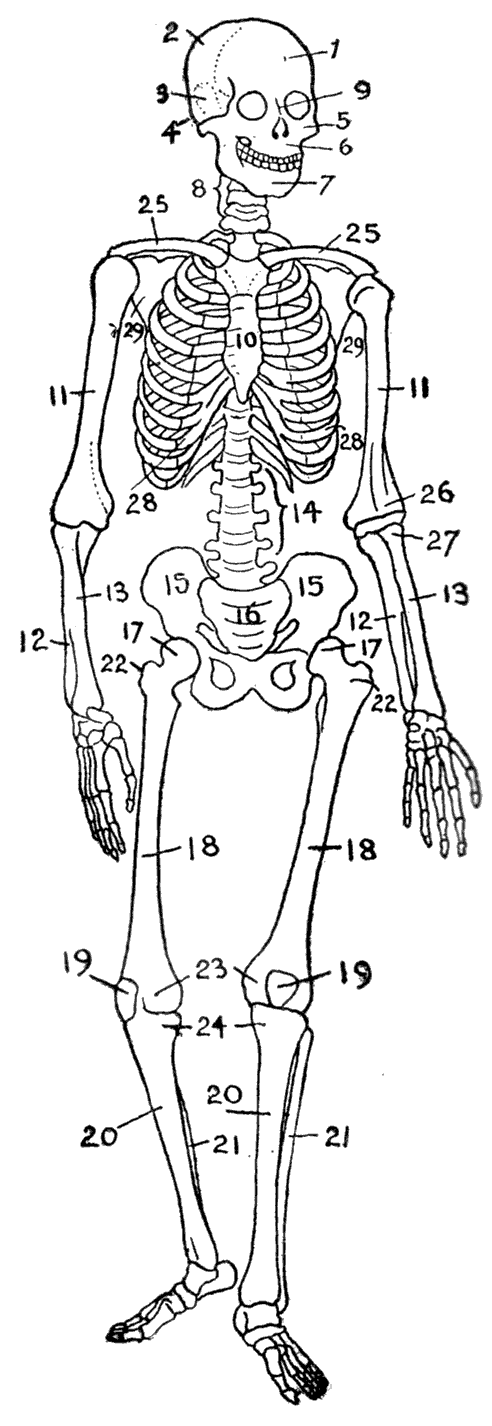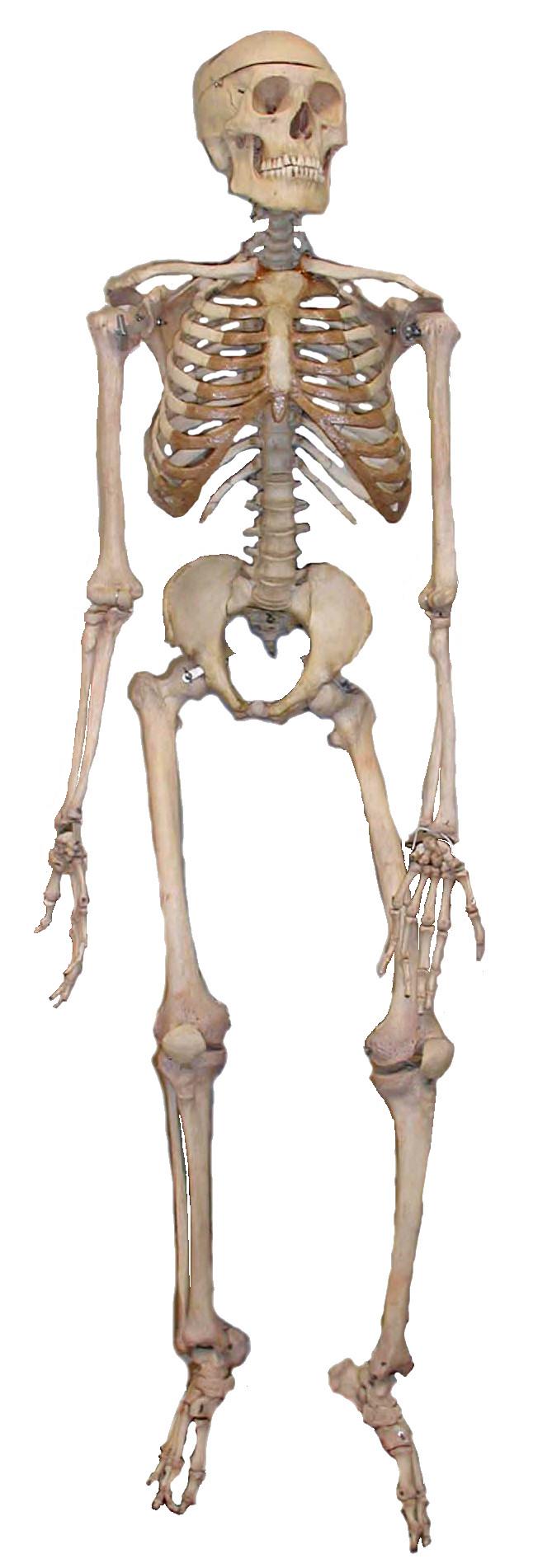Human anatomy
 From Wikidoc - Reading time: 6 min
From Wikidoc - Reading time: 6 min
|
WikiDoc Resources for Human anatomy |
|
Articles |
|---|
|
Most recent articles on Human anatomy Most cited articles on Human anatomy |
|
Media |
|
Powerpoint slides on Human anatomy |
|
Evidence Based Medicine |
|
Clinical Trials |
|
Ongoing Trials on Human anatomy at Clinical Trials.gov Trial results on Human anatomy Clinical Trials on Human anatomy at Google
|
|
Guidelines / Policies / Govt |
|
US National Guidelines Clearinghouse on Human anatomy NICE Guidance on Human anatomy
|
|
Books |
|
News |
|
Commentary |
|
Definitions |
|
Patient Resources / Community |
|
Patient resources on Human anatomy Discussion groups on Human anatomy Patient Handouts on Human anatomy Directions to Hospitals Treating Human anatomy Risk calculators and risk factors for Human anatomy
|
|
Healthcare Provider Resources |
|
Causes & Risk Factors for Human anatomy |
|
Continuing Medical Education (CME) |
|
International |
|
|
|
Business |
|
Experimental / Informatics |
Editor-In-Chief: C. Michael Gibson, M.S., M.D. [1]
Overview[edit | edit source]

Human anatomy, which, with physiology and biochemistry, is a complementary basic medical science is primarily the scientific study of the morphology of the adult human body.[1] Anatomy is subdivided into gross anatomy and microscopic anatomy.[1] Gross anatomy (also called topographical anatomy, regional anatomy, or anthropotomy) is the study of anatomical structures that can be seen by unaided vision.[1] Microscopic anatomy is the study of minute anatomical structures assisted with microscopes, which includes histology (the study of the organization of tissues),[1] and cytology (the study of cells). Anatomy, physiology (the study of function) and biochemistry (the study of the chemistry of living structures) are complementary basic medical sciences which are usually taught together (or in tandem).
In some of its facets human anatomy is closely related to embryology, comparative anatomy and comparative embryology,[1] through common roots in evolution; for example, much of the human body maintains the ancient segmental pattern that is present in all vertebrates with basic units being repeated, which is particularly obvious in the vertebral column and in the ribcage, and can be traced from very early embryos.
The human body consists of biological systems, that consist of organs, that consist of tissues, that consist of cells and connective tissue.
The history of anatomy has been characterized, over a long period of time, by a continually developing understanding of the functions of organs and structures in the body. Methods have also advanced dramatically, advancing from examination of animals through dissection of preserved cadavers (dead human bodies) to technologically complex techniques developed in the 20th century.
Study[edit | edit source]

Generally, medical students, dentists, physiotherapists, nurses, paramedics, radiographers, artists, and students of certain biological sciences, learn gross anatomy and microscopic anatomy from anatomical models, skeletons, textbooks, diagrams, photographs, lectures, and tutorials. The study of microscopic anatomy (or histology) can be aided by practical experience examining histological preparations (or slides) under a microscope; and in addition, medical and dental students generally also learn anatomy with practical experience of dissection and inspection of cadavers (dead human bodies). A thorough working knowledge of anatomy is required by all medical doctors, especially surgeons, and doctors working in some diagnostic specialities, such as histopathology and radiology.
Human anatomy, physiology, and biochemistry are complementary basic medical sciences, which are generally taught to medical students in their first year at medical school. Human anatomy can be taught regionally or systemically;[1] that is, respectively, studying anatomy by bodily regions such as the head and chest, or studying by specific systems, such as the nervous or respiratory systems. The major anatomy textbook, Gray's Anatomy, has recently been reorganized from a systems format to a regional format,[2][3] in line with modern teaching methods.
Regional groups[edit | edit source]
- Head and neck — includes everything above the thoracic inlet
- Upper limb — includes the hand, wrist, forearm, elbow, arm, and shoulder.
- Thorax — the region of the chest from the thoracic inlet to the thoracic diaphragm.
- Human abdomen to the pelvic brim or to the pelvic inlet.
- The back — the spine and its components, the vertebrae, sacrum, coccyx, and intervertebral disks .
- Pelvis and Perineum — the pelvis consists of everything from the pelvic inlet to the pelvic diaphragm. The perineum is the region between the sex organs and the anus.
- Lower limb — everything below the inguinal ligament, including the hip, the thigh, the knee, the leg, the ankle, and the foot.
Major organ systems[edit | edit source]
- Circulatory system: pumping and channeling blood to and from the body and lungs with heart, blood, and blood vessels.
- Digestive system: digestion and processing food with salivary glands, esophagus, stomach, liver, gallbladder, pancreas, intestines, rectum, and anus.
- Endocrine system: communication within the body using hormones made by endocrine glands such as the hypothalamus, pituitary or pituitary gland, pineal body or pineal gland, thyroid, parathyroids, and adrenals or adrenal glands
- Integumentary system: skin, hair and nails
- Lymphatic system: structures involved in the transfer of lymph between tissues and the blood stream, the lymph and the nodes and vessels that transport it including the Immune system: defending against disease-causing agents with leukocytes, tonsils, adenoids, thymus, and spleen
- Musculoskeletal system: movement with muscles and human skeleton (structural support and protection with bones, cartilage, ligaments, and tendons).
- Nervous system: collecting, transferring and processing information with brain, spinal cord, peripheral nerves, and nerves
- Reproductive system: the sex organs; in the female; ovaries, fallopian tubes, uterus, vagina, mammary glands, and in the male; testes, vas deferens, seminal vesicles, prostate, and penis.
- Respiratory system: the organs used for breathing, the pharynx, larynx, trachea, bronchi, lungs, and diaphragm.
- Urinary system: kidneys, ureters, bladder and urethra involved in fluid balance, electrolyte balance and excretion of urine.
Superficial anatomy[edit | edit source]

Superficial anatomy or surface anatomy is important in human anatomy being the study of anatomical landmarks that can be readily identified from the contours or other reference points on the surface of the body.[1] With knowledge of superficial anatomy, physicians gauge the position and anatomy of the associated deeper structures.
Common names of well known parts of the human body, from top to bottom:
- Head — Forehead — Jaw — Cheek — Chin
- Neck — Shoulders
- Arm — Elbow — Wrist — Hand — Fingers — Thumb
- Spine — Chest — Ribcage
- Abdomen — Groin
- Hip — Buttocks — Leg — Thigh — Knee — Calf — Heel — Ankle — Foot — Toes
- The eye, ear, nose, mouth, teeth, tongue, throat, adam's apple, breast, penis, scrotum, clitoris, vulva, navel are visible too.
Internal organs[edit | edit source]
Common names of internal organs (in alphabetical order) :
Adrenals — Appendix — Bladder — Brain — Eyes — Gall bladder — Heart — Intestines — Kidney — Liver — Lungs — Esophagus — Ovaries — Pancreas — Parathyroids — Pituitary — Prostate — Spleen — Stomach — Testicles — Thymus — Thyroid — Uterus — Veins
Brain[edit | edit source]
Amygdala — Brain stem — Cerebellum — Cerebral cortex — Limbic system — medulla — midbrain — pons
See also[edit | edit source]
- Anatomy
- Body orifices
- Death
- Human
- Human biology
- Human body
- Terms for anatomical location
- List of human anatomical features
- List of human anatomical parts named after people
- Visible Human Project
- List of regions in the human brain
- List of bones of the human skeleton
- List of muscles of the human body
- List of distinct cell types in the adult human body
References[edit | edit source]
- ↑ 1.0 1.1 1.2 1.3 1.4 1.5 1.6 "Introduction page, "Anatomy of the Human Body". Henry Gray. 20th edition. 1918". Retrieved 27 March 2007. Unknown parameter
|dateformat=ignored (help) - ↑ "Publisher's page for Gray's Anatomy. 39th edition (UK). 2004. ISBN 0-443-07168-3". Retrieved 27 March 2007. Unknown parameter
|dateformat=ignored (help) - ↑ "Publisher's page for Gray's Anatomy. 39th edition (US). 2004. ISBN 0-443-07168-3". Retrieved 27 March 2007. Unknown parameter
|dateformat=ignored (help)
- "Anatomy of the Human Body". 20th edition. 1918. Henry Gray. In public domain.
External links[edit | edit source]
- Anatomy Dissection videos
- e-Anatomy - Interactive atlas of whole human body cross-sectional anatomy.
- Anatomy Lab - Interactive quizzes, question-of-the-week, and photographs.
- The Anatomy Wiz - An Interactive Cross-Sectional Anatomy Index
- RAAViewer - Computer based atlas of human anatomy: entire body in cross-section
- Free online accessible 3D model of the human body
- Anatowiki Interactive anatomy website
- Anatomy Mnemonics Mnemonics in Human Anatomy.
ar:تشريح الإنسان an:Anatomía umana bn:মানব এ্যানাটমী zh-min-nan:Sin-khu ca:Anatomia humana et:Inimese anatoomia eo:Homa anatomio eu:Giza gorputz fa:کالبدشناسی انسان ko:인체해부학 hi:मानव का शरीर रचना विज्ञान hr:Anatomija čovjeka id:Anatomi manusia is:Líffærafræði mannsins it:Anatomia umana he:גוף האדם ku:Laşê mirovan lv:Cilvēka anatomija jbo:remna xadyske hu:Emberi test mk:Анатомија на човекот nl:Menselijke anatomie no:Menneskets anatomi nn:Menneskeanatomi simple:Human body sk:Anatómia človeka sl:Anatomija človeka su:Anatomi manusa fi:Ihmisen anatomia sv:Människans anatomi tl:Anataomiya ng tao th:กายวิภาคศาสตร์มนุษย์ uk:Анатомія людини yi:מענטשליכער אנאטאמיע
 KSF
KSF